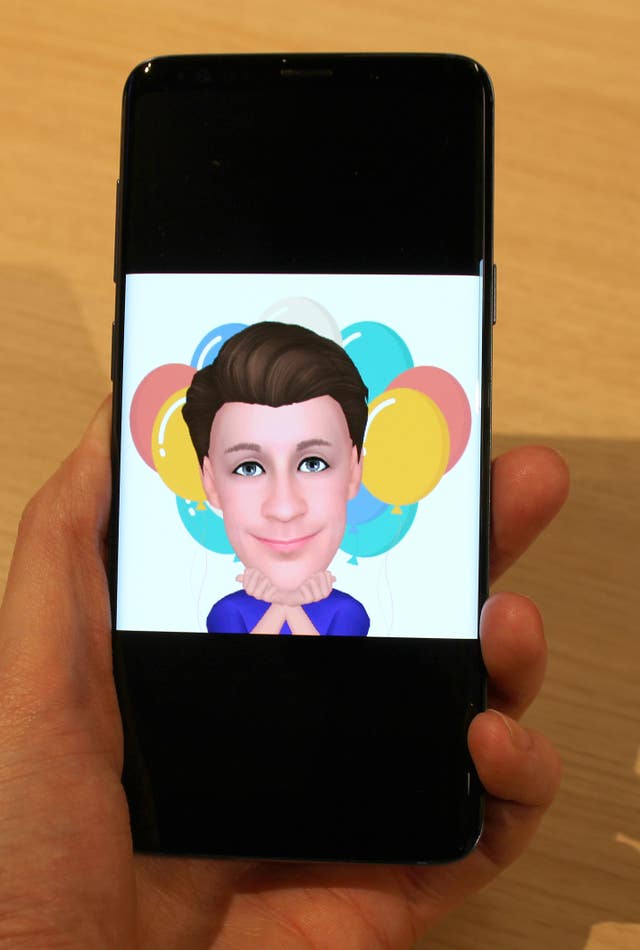
The Samsung Galaxy S9 and S9+ smartphones and their new dual aperture camera technology will attempt to rival the iPhone X when they go on sale in the UK next week.
Ahead of the launch, Press Association technology correspondent Martyn Landi has spent a week testing the new S9 version of the device.
Here is what he thought.
– What are the key features?
The focal point of the Galaxy S9 is the redesigned camera system. This includes what the company calls Dual Aperture technology, a system designed to mimic the iris of the human eye in that it can expand or contract to let more or less light into the lens when taking a picture.
The rear camera can now also capture super slow motion videos at 960 frames per second, with automatic motion detection that triggers recording at the correct moment to ensure a vivid slo-mo video. These short videos can then be easily shared and turned into GIFs.
There’s also AR Emoji, a feature that turns selfies into animated emoji, and serves as Samsung’s answer to Apple’s Animoji.
– So do these features make a difference?
Using dual aperture, the S9’s ability to open up its lens to let in more light in darker settings has an impressive effect on night time photography, significantly outperforming its rivals – including the iPhone X – as a low-light camera as a result.
No other current smartphone offers an automatically flexible aperture, and this means the S9 is better in a wider range of photography settings than many of its contemporaries.
The super slow-motion also works well, its automatic motion detection helps to ensure the fleeting moment you wish to capture is not missed.
However, planning a slo-mo video is not yet a mainstream phone usage habit in the same way taking a selfie or posting an Instagram Story update is. As a result, right now the best slo-mo videos tend to be the ones you wish you’d captured once the moment has passed.

– What about AR Emoji?
AR Emoji is more an entertainment tool than a showcase of camera power, and on that criteria it works. The likeness of the avatars can vary drastically from person to person, but the collection of GIFs automatically created for each avatar in a range of emotions often raise a smile and can be easily shared via messages.
The face-tracking technology that enables users to animate an AR Emoji live on-screen using facial expressions and record the result is also a fun feature, if not one that defines the experience of the S9.
– Anything else notable?
The fingerprint sensor on the rear of the device has been moved from next to the camera to beneath it. It’s a small but vital change that plagued last year’s S8 – as users would often smear a finger over the camera lens when reaching for the sensor.
Virtual assistant Bixby has also been given a slight update, and the Bixby Vision camera feature is now capable of live translation of languages when pointed at menus or signs.
Battery life too remains robust, with the same 3000mAh battery in the S9 as in last year’s S8, which easily lasts a day on a single charge, even with heavy use.

– What are its limitations?
The Galaxy S9 is very much an incremental smartphone update from Samsung, and this is an issue because it leaves some aspects of the phone not feeling fresh or new.
The design is very much the same as the S8, and many of the specifications including screen size and and resolution are the same as the S8.
As a result, this new Samsung flagship is a harder sell for the Korean firm, thanks to few innovations to unveil to consumers.
– Cost?
The Galaxy S9 costs £739, and the larger S9+ with dual rear cameras is priced at £869.
– What’s the verdict?
The Samsung Galaxy S9 has the potential to be the best smartphone released in 2018, surpassing the iPhone X in the process.
It may contain only incremental changes from last year’s S8, but that device was an exceptional one and the addition of near-professional standard low-light photography thanks to the dual aperture makes the S9 a worthy Samsung flagship.
But for smartphone users with an S8 or similar Android smartphone device from 2017, the urge to upgrade will not be as strong as it could be because of the few other major upgrades to the device.
If photography is important, the S9 is the smartphone for you. Otherwise it may pay dividends to see what else is on offer as the year progresses.


Comments: Our rules
We want our comments to be a lively and valuable part of our community - a place where readers can debate and engage with the most important local issues. The ability to comment on our stories is a privilege, not a right, however, and that privilege may be withdrawn if it is abused or misused.
Please report any comments that break our rules.
Read the rules here